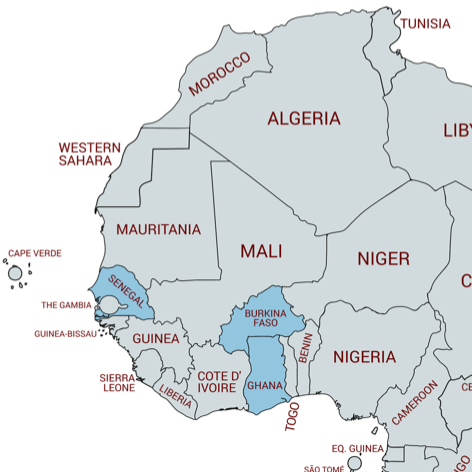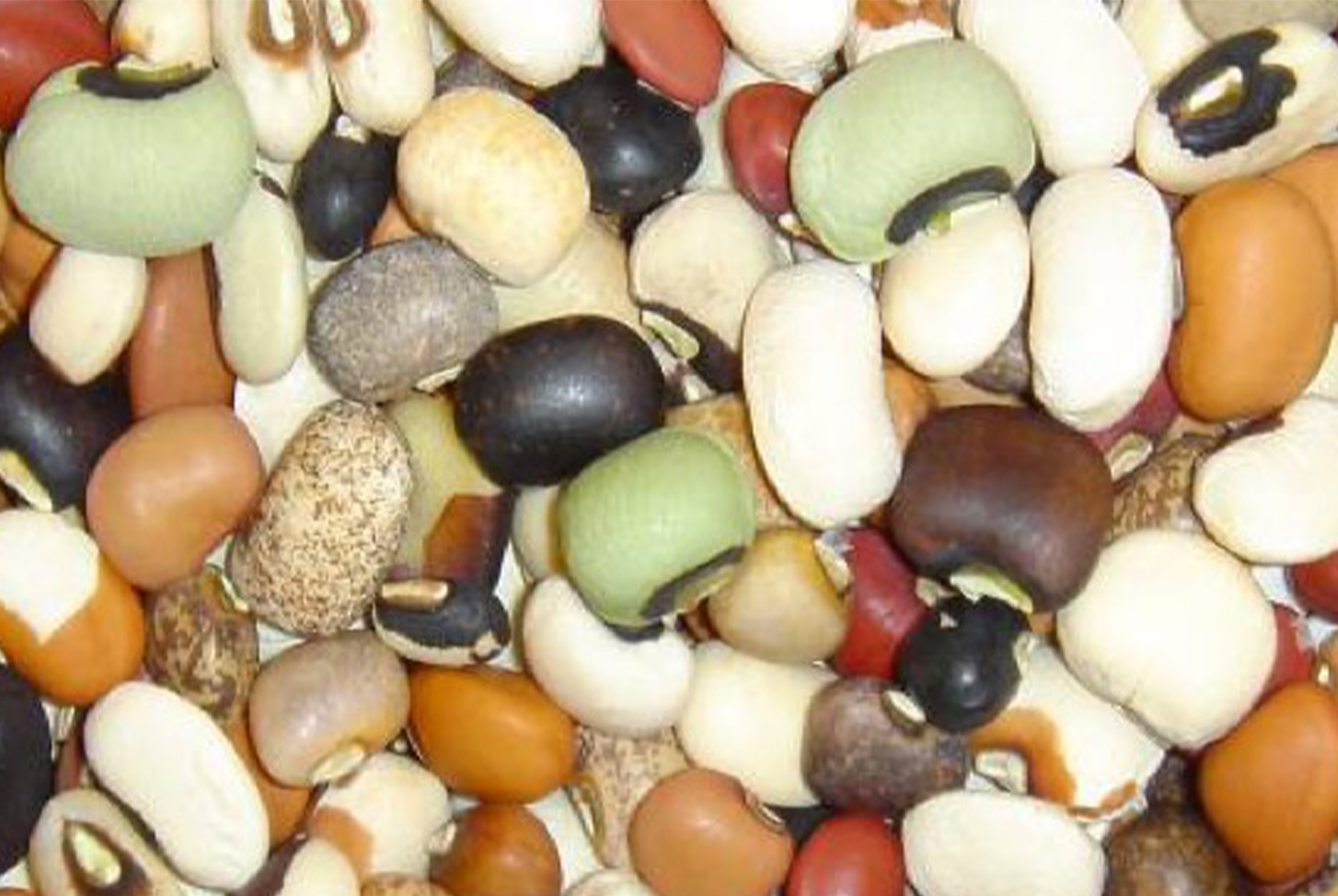Development of Market-Driven Improved Cowpea Varieties Using Mature-Markers
Principal investigator/Lead institution: Dr. Philip Roberts, University of California, Riverside
Collaborating institutions: Centre National Recherches Agronomie, Bambey,
Institut Senegalais de Recherches Agricole (ISRA) & Dry Cereal Research Center (CERAAS), Senegal
CSIR- Savanna Agricultural Research Institute (SARI), Ghana
Institut de l'Environnement et des Recherches Agricole (INERA), Burkina Faso
Works in: Senegal, Ghana, Burkina Faso
Project overview

Cowpea, a highly nutritious legume crop vitally important to food security in the Sudano-Sahel, West Africa, especially for women and children, complements dietary cereals. However, typical smallholder farmer yields are 10-20% of yield potential, mainly due to insect pests, pathogens, parasites and drought.
This project focuses on Ghana, Senegal and Burkina Faso, three countries in the West Africa cowpea production region, which represent the primary cowpea production agro-ecologies within each of the countries, and provide a broader regional representation of West Africa cowpea production systems.
Cowpea downstream breeding will utilize previously discovered SNP marker haplotypes linked to target traits. A suite of marker-trait pairs is being used in improvement of elite varieties and lines through indirect selection for enhanced variety release.

Tolerance/resistance to aphids, thrips, Macrophomina, and Striga, together with drought tolerance and preferred grain quality (large seed, rough seed-coat for quicker cooking time, plus seed color specific to HC target region market preference for white, or light cream with brown-eye or black-eye, or brown) are being targeted to improve current popular varieties, and in advanced breeding population lines selected for market-driven preferred grain types.
Improvement of elite varieties and lines will be conducted using three sets of cowpea breeding stocks, including breeder-selected current elite varieties in each HC, advanced MAGIC lines and elite MARS lines. Field and greenhouse phenotyping in Ghana, Senegal and Burkina Faso is being matched with SNP marker high-throughput genotyping to select target traits and for recurrent background recovery in backcrossing cycles and target trait foreground selection.
Near-release lines will be tested regionally to broaden release potential.
In California, cowpea dry grain novel market classes of breeding lines will be advanced, utilizing marker resources and advanced breeding lines for overlapping trait targets with the West Africa targets.
Primary capacity building in each of the host countries will be achieved by graduate degree training in cowpea breeding and genetics, coupled with short-term annual training of NARO scientists in molecular breeding.
The outputs and associated capacity building will increase pulse productivity via yield gain, thereby promoting dietary nutritional value and the livelihoods of women and youth, and resilience by increased household incomes.
Click here to download the Project Fact Sheet
Want to learn more?
Presentation at the 2022 Global Legume Lab Convening. Additional presentation at the 2022 Global Legume Lab Convening. Presentation at the 2021 Global Legume Lab Convening.



